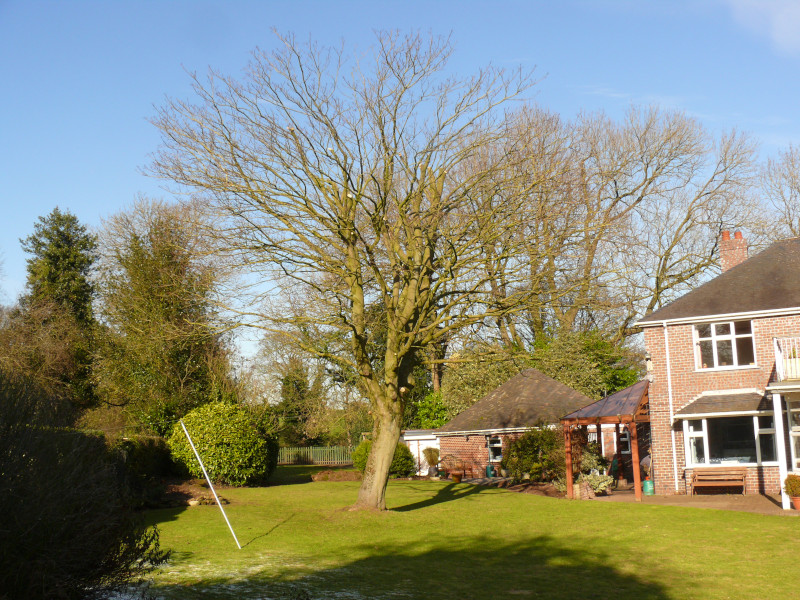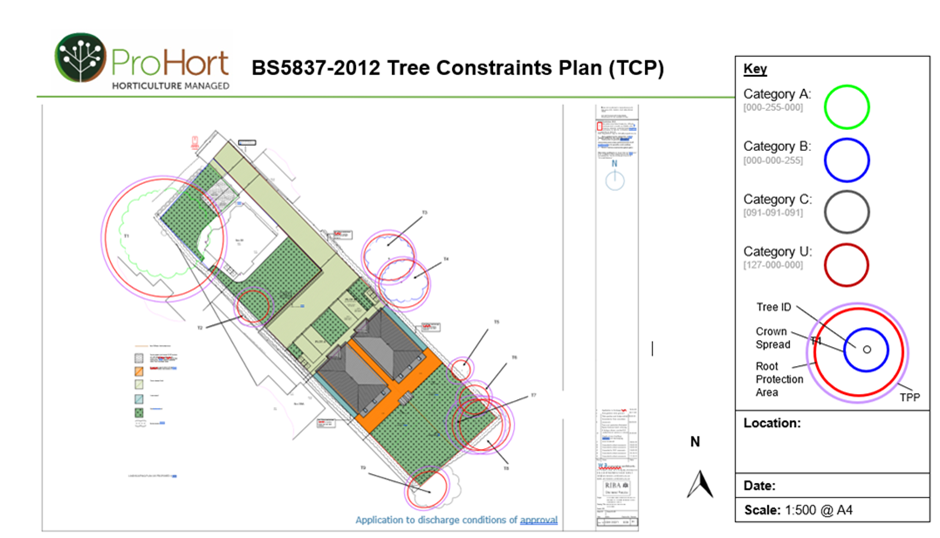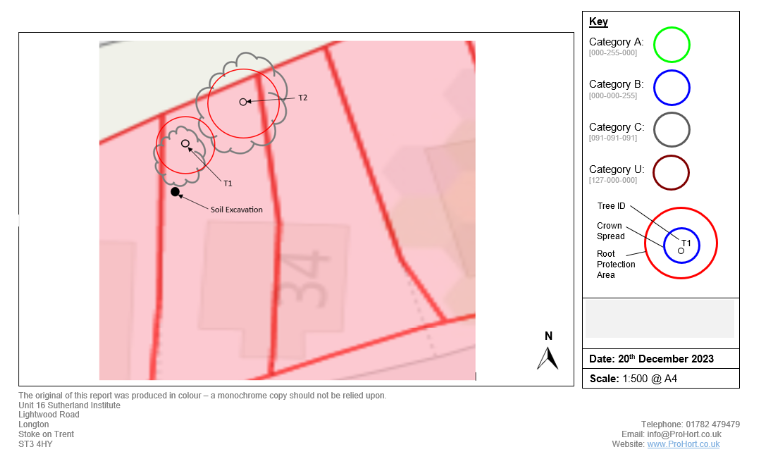Tree Protection Plan
What is a Tree Protection Plan?
You need a Tree Protection Plan when applying for planning permission as this will always be required by the town planners.
The purpose of the Tree Protection Plan (TPP) is to illustrate all the trees that are to be retained. This would include accurately showing the spread of the trees to the four cardinal points (North, East, South & West). It would also include showing where the protective fencing would be erected so as to protect the trees roots and canopy.
See below example of a TPP as part of a tree survey to the B5837:2012 standard:

How do I Know if a Tree Has a TPO (Tree Protection Order)?
The first way is to take a look at the actual tree, often they have a silver metal tag attached to the tree to identify them with a number. As this is not always the case, you can then check the council website as some councils will have a web page with all trees that have a TPO on them identified on a virtual map. The final way is to make direct contact and request the information in writing.
How Close Can I Dig to a Tree That Has a TPO?
What happens if I Cut Down a Tree With a TPO?

Contact Us:
If you have any questions with regards Tree Protection Plans and Preservation Orders please give us a ring on: 01782 479479 (Head office) or contact us.
Why not follow us on Facebook to stay up to date with our latest news.



